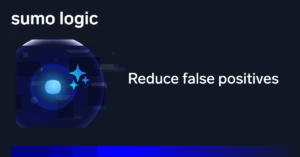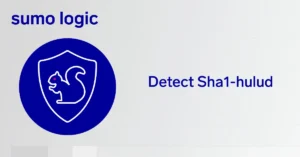Our digital surface is expanding rapidly and threats are becoming more sophisticated day by day. This is putting enormous strain on security teams, which have already been stretched to the limits. Nonetheless, organizations are skeptical of relieving this cybersecurity strain with AI and automation. Why does this situation persist when it’s simply against the logic? We are now in a global shortage of skilled security staff, so organizations have no other choice but to embrace these new technologies, or else they will fall further behind increasingly sophisticated cybercriminals.
In this article, I would like to draw your attention to the following:
- The current cyber threat landscape and its risks
- The cybersecurity skills gap and its consequences
- How to better protect your infrastructure in today’s cyberspace
Current risks in our expanding cyberspace
Cloud migration budgets are growing at 6x the pace of general IT spending, which is a trend that carries tremendous risks for many enterprises. Simply moving the infrastructure to the cloud will not allow them to benefit from what the cloud has to offer, especially if it isn’t coupled with proportional cybersecurity spending.
As organizations continue to migrate to the cloud, one simple misconfiguration can result in a major data breach that could have grave consequences on the organizations’ finances. What is more, the attack surface has virtually exploded over the last decade – we need to take into consideration every device, IoT, containers, modern applications (load balancers, VPC flows, CI/CD, microservices) which are operating in multi-cloud environments. What’s the result? We have more gaps in visibility than ever before.
Of course, many companies turn to legacy security solutions as they migrate to the cloud – there is an abundance of choice when it comes to these solutions. But are they capable of securing the cloud environment? Unfortunately not. Many organizations don’t yet realize that legacy security tools weren’t built for the cloud and are unable to handle modern security threats. Such solutions present technological limitations that aren’t aligned with their organizational cloud strategy. An organization’s cloud transformation strategy must include relevant cloud security measures, which are different than those applicable to on-premises environments.
The cybersecurity skills gap and its consequences
Meanwhile, security teams are already stretched to the limit. Only last year, ISC2 estimated the shortage of cybersecurity workforce at 4.07 million professionals, while the size of the workforce available globally is just under 3 million. What’s more, as much as 65% of organizations report a shortage of cybersecurity staff.
It’s a grim outlook that cannot be ignored. As most organizations suffer a serious shortage of security personnel, they become more vulnerable to cyberattacks by the minute. The visibility tools available create too many alerts – they’re so numerous, that even the largest SOCs struggle to handle them all. Investigation processes are often too slow and thus inefficient. Most tools cannot be integrated with additional devices, which means that security professionals end up with multiple consoles and alerts that aren’t in any way correlated or often end up being false positives.
Security operations are no longer a problem of human scale. It’s unrealistic to think that the shortage of cybersecurity staff can be rectified fast enough – the attack surfaces are expanding so quickly that it outpaces the training capacities for skilled professionals. This problem simply cannot be solved with recruitment, but outsourcing SecOps will not bring the expected results either. Many of our customers tell us they’re not getting enough value in the threat reports from their MSSPs. It’s high time to change the way SOCs operate.
What’s the alternative? Automation. The problem is that organizations are wary of turning to automation to handle cybersecurity. However, they don’t start embracing these new technologies, they will quickly fall further behind increasingly sophisticated cybercriminals. Organizations need a modern SaaS SIEM to secure their cloud journey, match the changing attack surface, and bring innovation back to the SOC. There are no other options.
What to look for to minimize the risks
Amid the abundance of risks and threats in cyberspace, we need new, automated solutions that would allow us to better secure our environments. Automation of security operations in a number of areas is key to enhancing SOCs amid skill shortages. Organizations should look for SaaS SIEM solutions that offer the following:
- Cloud-native architecture: solutions with a cloud-native architecture bring invaluable advantages to SOCs currently experiencing personnel strain and skill shortages. Being cloud-native eliminates hardware and software requirements and, more importantly, the dedicated staff to deploy, maintain, and manage the solution.
- Multi-tenant elastic scalability: organizational needs change just as fast as the threat landscape. This feature would ensure the solution has the resource elasticity to automatically scale up or down data ingestion as demand varies, along with the performance necessary for rapid big data analysis.
- Unified collaboration: platforms built for the entire IT and Dev world, offering collaboration between the SecOps, ITops, and application teams, would provide comprehensive support. This would allow organizations to maximize threat visibility and ensure all teams across the organization are working from the same data.
- Cloud provider neutrality: as multi-cloud environments proliferate, it’s important for customers to gain full flexibility and freedom when it comes to bringing in their data, regardless of location or cloud provider.
- Economic data collection & analysis: a modern security solution should offer tiers that provide customers with choice and flexibility that enables cost savings and avoids surprise overages.
- Out-of-box content: you need integrations and out-of-the-box content rules that enable quick deployment and deliver rapid time to value.
- Automated threat enrichment: enriching alerts with additional data, like network, user, and entity information, provides greater context for security analysts as they investigate potential incidents.
Sumo Logic is modernizing security operations with the above functionality in our modern SaaS SIEM that automates SecOps workflows and delivers a modern-analyst experience via our cloud-native platform.



